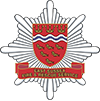Fire Safety Signs are designed to help the occupants in a building evacuate the premises. They signpost people to firefighting equipment and information and potential hazards to stay away from.
Types of Fire Safety Signs that are required
The Fire Action Notice
The ‘Fire Action Notice’ which explains what to do if there’s a fire. It includes information such as how to call the fire brigade, which exit to use to leave the building and where the assembly point is.


Fire Exit Routes & Assembly Point signs
To ensure safety during emergencies, it's essential to know the location of fire exit signs and how to navigate them. They guide to safe escape routes, highlight fire exits, and indicate assembly points post-evacuation. They also serve to remind occupants to maintain clear access to these key routes.


Fire Safety Location signs
Signs which indicate fire-fighting equipment is located such as fire extinguishers, hose reels and dry risers, as well as pointing out the location of fire alarm call-points for raising the alarm.


Warnings and Prohibitions
Signs such as ’Danger’ or ’No Smoking’ are used to warn of hazards or restrict behaviours. They alert occupants to potential fire risks, like highly flammable materials, or instruct against actions which could cause a fire. A common example is the ’No Smoking’ sign.


Because a premises’ lighting may fail if there’s a fire, fire safety signs are photo luminescent. This is so the glow of the signs can help occupants make their way out of the building and find fire-fighting equipment.
Which signs you require depends on what your premises are used for, how they’re laid out, and which fire-fighting equipment you have. A complex building with many floors and corridors, or a building which routinely stores hazardous materials will need more fire safety signs than a small, one-storey, one room building.
Your fire risk assessment will inform you which signs are required to ensure your premises complies with the Fire Safety Order 2005
